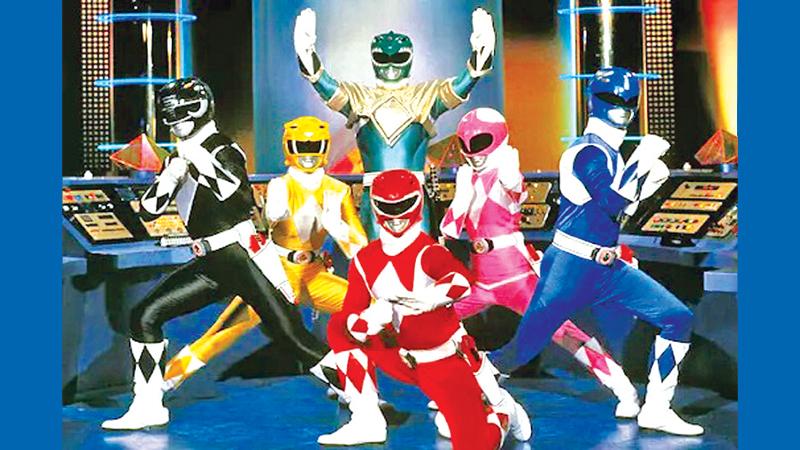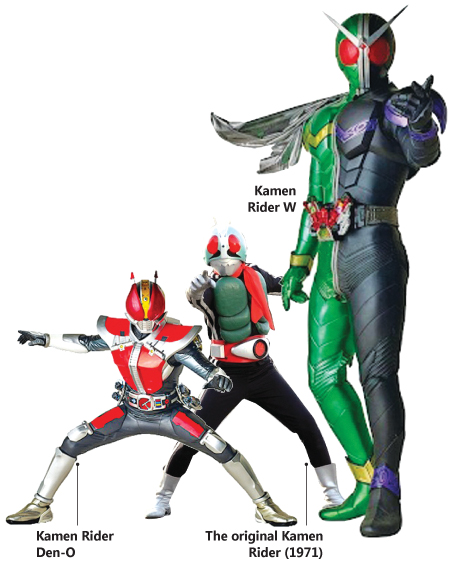
Unfortunately, Kamen Rider never really obtained that Western fame and hardly anyone outside of Japan actively chooses to indulge in the show. This results in Kamen Rider having a couple of positives and negatives when it comes to how their storylines are constructed
During the Showa era in 1971, a budding Japanese manga artist Shotaro Ishinomori had an ongoing manga series in the ‘Weekly Shōnen Magazine’. Upon his manga becoming a sleeper hit, he was tasked with turning his work into a live-action television series and this show went on to be dubbed “Kamen Rider”, becoming the first entry in the soon-to-be Kamen Rider franchise. The show gained so much traction that it forever altered the course of superhero genres in Japan, and globally to some extent. Thus, the Masked Rider era was born.
Kamen Riders - What exactly are they?
Following the debut of Kamen Rider (1971), more Riders were introduced throughout the rest of the Showa era, with at least one for every year. Most of the early Kamen Riders had gear and suits that were inspired by various different insects, although this changed following the start of the Heisei era.
A Kamen Rider generally dons a full-body spandex costume, a helmet or mask based on whatever theme their respective show is based upon, and a belt around their waist which provides them with the ability to transform back and forth between their “Rider form” and their human form. The early versions of these superpowered vigilantes only had one Rider form, but later iterations had multiple, with each form providing them with abilities that proved useful in different crime fighting scenarios. Moreover, every Rider uses a personalized bike as their mode of transport.
The Heisei Era
 Nobody would have anticipated the growth of Kamen RIder culture in Japan leading up to the Heisei era. It was nothing short of unexpected, and Toei Company, the owner of the franchise, saw the perfect time to strike while the iron was hot.
Nobody would have anticipated the growth of Kamen RIder culture in Japan leading up to the Heisei era. It was nothing short of unexpected, and Toei Company, the owner of the franchise, saw the perfect time to strike while the iron was hot.
Unlike the Showa era, this new era of Kamen Riders wasn’t necessarily in a shared universe. Each Kamen Rider that was introduced existed in a singular world, with their own eccentric abilities, themes, villains, and laws. This allowed Toei to hire new directors and entirely new casts for every series, hence granting significant creative freedom as there weren’t any rules to follow or a common overarching story to stick to. It sort of became an anthology series of sorts, although there was the occasional easter egg or character that would make a cameo or two past their initial run as a titular Kamen Rider.
Kamen Rider Den-O, W, and OOO
Often regarded as the holy trinity of the Heisei era, these three Riders introduced and successfully implemented brand-new concepts into the already creatively diverse world of Riders. Kamen Rider Den-O had over five personalities, with each one of them personified as a demon. Kamen Rider W had two protagonists who could combine to become one Rider, dividing their Rider form in half. Finally, Kamen Rider OOO has, to date, the most amount of forms for a single Rider. These revolutionary concepts introduced Kamen Rider as a whole to a much wider audience, and its journey in the mainstream light continued in quite an escalating manner.
Being the smash hits that they were, these three shows led to multiple extremely profitable movies which were either stand-alone or crossovers with other riders.
Mighty Morphin Power Rangers
Shotaro Ishinomori, the creator of the original Kamen Rider in 1971, also conjured up a show titled “Super Sentai”. Upon noticing its potential, American-Israeli company Saban Entertainment decided to adapt footage from Super Sentai and make an English version. This went on to be known as the “Mighty Morphin Power Rangers”, and just like the original Kamen Rider, it kicked off a brand new franchise.
Power Rangers became so colossal that people soon forgot their roots, though some cultured individuals still give their flowers to Super Sentai. Western folks don’t necessarily remember the Kamen Rider origins, despite the horrible attempt to make an Americanized Kamen Rider, titled “Masked Rider”. It drew an avalanche of negative criticism and hardly even left a dent in American pop culture, which led to its cancellation soon thereafter.
The appeals and the bores
To most of you, this whole concept of a show starring a superpowered individual might seem a bit redundant or overdone, considering how many times the likes of Marvel and DC have pulled off something similar. However, what most of you fail to realize is the boatloads of passion packed into every single Kamen Rider show.
Becoming a Western sensation pretty much secures a huge budget for whatever media you are in charge of. Unfortunately, Kamen Rider never really obtained that Western fame and hardly anyone outside of Japan actively chooses to indulge in the show. This results in Kamen Rider having a couple of positives and negatives when it comes to how their storylines are constructed.
On the plus side, the target demographic is mostly Japanese children, between the ages of 7 and 15. This means that the writers and directors know exactly who they are trying to captivate, and this understanding enables them to fabricate a story that lives up to its expectations, and maybe even more. Moreover, there isn’t a need to cast big-name actors/actresses, as each series features an all-new cast. This allows directors to split the funds in favour of practical effects and CGI, instead of blowing it all on an A-list cast.
Despite that, the limited target demographic also means that there isn’t an incentive to shoot for the stars. The showrunners aren’t trying to rope in a new audience, so they don’t bother writing more mature stories that don’t always target small children. Furthermore, when a fresh notion is presented in a show, most of the subsequent shows will leech that notion until it gets old and loses all its charm. Then again, I highly doubt the youngsters care about all that. I, myself, grew up with the holy trinity, and I remember it being an absolute blast. I only really noticed the negative aspects when I rewatched them after some years had passed. Kamen Riders have one main job, and it’s a job they do proficiently. They are vessels of blissful entertainment.
